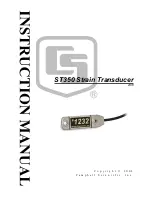
27
z
Main-Band / Sub-Band display area
Displays mode
(VFO Mode and Memory Mode are switched each time the Mode area is touched.)
Memory channels of the same frequency band are automatically grouped and re-
called as follows by the memory auto grouping (MAG) function.
M-ALL
: Recalls all memory channels regardless of frequency band
M-AIR
: Recalls only memory channels in the AIR band (108 - 137MHz).
M-VHF
: Recalls only memory channels in the 144MHz band (137 - 174MHz).
M-UHF
: Recalls only memory channels in the 430MHz band (400 - 480MHz).
OTHER
: Recalls only VHF and UHF memory channels (174 - 400MHz and 480 -
999.995MHz).
PMG (Primary Memory Group) Function
VFO mode
HOME
HOME Channel
: Repeater minus (-) shift
: Repeater plus (+) shift
: Split operation
Skip Memory Channel
(Permits designating undesired channels to be skipped during scanning.)
Bell function is activated.
TX/RX DG-ID is displayed
: TX DG-ID is displayed
: RX DG-ID is displayed
Mode/Status indicator
Red : Transmitting
Blue : Receiving (Digital C4FM mode)
Green : Receiving (Analog FM mode)
White : Receiving (Analog AM mode)
TN
TSQ
RTN
DCS
PR
PAG
DC
T-D
D-T
Squelch type is displayed (For additional details, refer to the Advanced Manual.)
TN
: Tone Encoder (tone frequency is displayed)
TSQ
: Tone Squelch (tone frequency is displayed)
RTN
: Reverse Tone (tone frequency is displayed)
DCS
: DCS (Digital Code Squelch) (DCS code is displayed)
PR
: No-communication Squelch
PAG
: Pager (EPCS)
The following can be set when the squelch expansion (see page 69) is “ON”:
DC
: Send the DCS code only during transmission. (DCS code is displayed)
T-D
: Send the CTCSS tone signal during transmit, and wait for the DCS code in
receive mode. (tone frequency is displayed)
D-T
: Send the DCS code during transmit, and wait for the CTCSS tone signal in
receive mode. (tone frequency is displayed)
















































